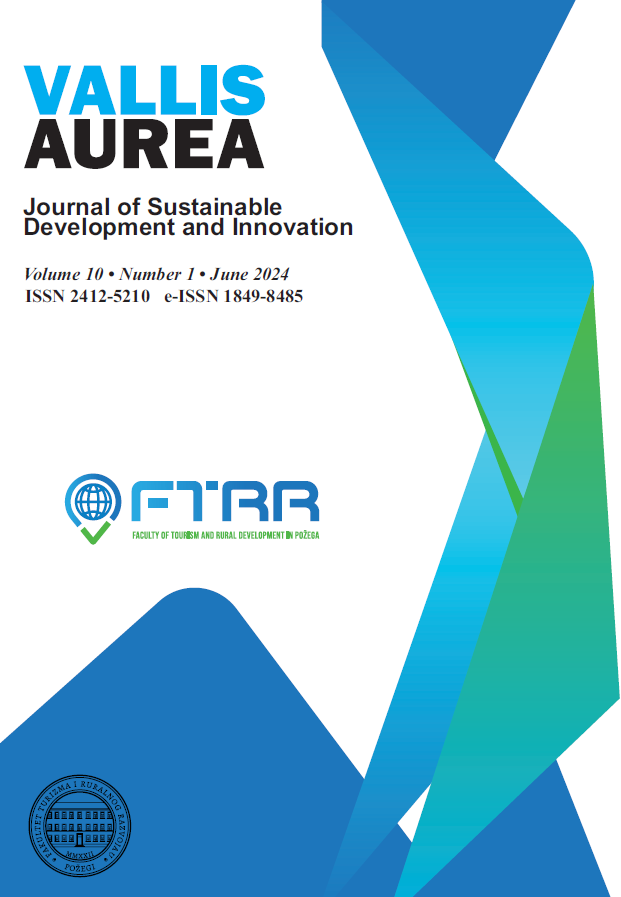Revitalizing Freshwater Ponds: Assessing Physical Structures, Water Quality Parameters and Sustainable Bio- Recharging Strategies Through Community Engagement
DOI:
https://doi.org/10.62598/JVA.10.1.1.1Keywords:
Revitalization, Biodiversity, Bio- recharging, Water qualityAbstract
Purpose: The purpose of this study is to revitalize the freshwater ponds by assessing physical structures, water quality parameters and sustainable bio- recharging strategies through community engagement.
Research Design: The study employs a combination of exploratory and descriptive research approaches. Sampling was conducted among the individuals who are in direct access with the freshwater ponds.
Methodology: Data collection involved direct surveys using a structured questionnaire and the water samples were collected from the selected regions
Results: The results reveal that there are ponds that need immediate restoration and rejuvenation in order to sustainably take up the matter of a balanced ecosystem for the better survival and coexistence of individual species along with mankind by proper maintenance of the water body for a better tomorrow. The water quality analysis shows significant causes of deterioration due to ecological instability and overuse of the resources by improper management strategies which resulted in loss of biodiversity and habitat loss.
Originality of Research: This study records the revitalization of freshwater ponds by assessing physical structures, water quality parameters, and sustainable bio- recharging strategies through community engagement.
References
1. Anagha, S., & Divya, R., (2021) Comparative assessment on the ecological health of four different ponds in Manathana region of Kannur district, India, 1237-1246.’
2. Beat Oertii, Kristedn M Parris (2019),’ Towards management of urban ponds for freshwater biodiversity’.
3. Cai, Y., Liang, J., Zhang, P., Wang, Q., Wu, Y., Ding, Y., Wang, H., Fu, C., & Sun, J. (2021, December 1). Review on strategies of close-to-natural wetland restoration and a briefcase plan for a typical wetland in northern China. Chemosphere. https://doi.org/10.1016/j.chemosphere.2021.1315
4. Cambronero, M. C., Blicharska, M., Perrin, J. A., Davidson, T. A., Oertli, B., Lago, M. J. D., Beklioğlu, M., Meerhoff, M., Arim, M., Teixeira, J., De Meester, L., Biggs, J., Robin, J., Martín, B., Greaves, H. M., Sayer, C. D., Lemmens, P., Boix, D., Mehner, T., . . . Brucet, S. (2023, February 14). Challenges and opportunities in the use of ponds and pondscapes as Nature-based Solutions. Hydrobiologia (The Hague. Print). https://doi.org/10.1007/s10750-023-05149-y
5. Christopher Hassall (2014)’ The ecology and biodiversity of urban ponds’
6. Ekaterina Lengefeld, Lindsay C. Stringer & Prema Nedungadi (2021). ‘Livelihood security policy can support ecosystem restoration’. Restoration Ecology, Volume 30, Issue 7
7. Jyotish R.D, Moni K.B & Pranjit Kumar. S, (2021) Historical ponds of Darrang district: Identification and mapping, their ecological relevance for management planning, International Journal of Geoheritage and Parks, Volume 9, Issue 4,2021, Pages 496-508
8. Lengefeld, E., Stringer, L. C., & Nedungadi, P. (2022, February 17). A livelihood security policy can support ecosystem restoration. Restoration Ecology. https://doi.org/10.1111/rec.13621
9. Lorimar Serrano, Marie E DE Lorenzo (2008) ‘Water quality and restoration in a coastal subdivision storm water pond.’
10. Matthew J H, Jeremy Biggs, Ian Thornhill, Robert A Bries, David G Gledhill, James C White, Paul J Wood, Christopher Hassall (2017) ‘Urban ponds as an aquatic biodiversity resource in modified landscapes’.
11. Nahiduzzaman, M., Karim, E., Nisheeth, N. N., Bhadra, A., & Mahmud, Y. (2023, December 1). Temporal distribution of plankton and fish species at Mithamoin Haor: Abundance, composition, biomass, and ecosystem-based management approach. Heliyon. https://doi.org/10.1016/j.heliyon.2023.e22770
12. Petrov, D. (2015). Determinants Of Choosing Sources Of Financing For Municipal Projects. Vallis Aurea, 1(1), 56–63. https://doi.org/10.2507/ijva.1.1.5.5
13. Roel H. Bosma & Marc C.J. Verdegem, Sustainable aquaculture in ponds: Principles, practices and limits, Livestock Science, Volume 139, Issues 1–2, 2011, Pages 58-68
14. Sunil Kumar S.A, CK Misra, Ajit K.C, Asha Landge, Kiran Dube, BB Nayak & Latha Shenoy, Comparative analysis of fish culture methods in village ponds of Gujarat, Fishery Technology 56, 254-260, 2019.
15. Usio, N., Imada, M., Nakagawa, M., Akasaka, M., & Takamura, N. (2013, July 21). Effects of Pond Draining on Biodiversity and Water Quality of Farm Ponds. Conservation Biology. https://doi.org/10.1111/cobi.12096
16. Zainulabdeen, Y. P., & Nagaraj, H. (2022, June 6). Anthropogenic Impacts on Wetlands of Kerala, India: A Review of Literature. Journal of Geography, Environment, and Earth Science International. https://doi.org/10.9734/jgeesi/2022/v26i630355
17. Zedler, J. B. (2000, October 1). Progress in wetland restoration ecology. Trends in Ecology & Evolution (Regular Ed. Print). https://doi.org/10.1016/s0169-5347(00)01959-5
Downloads
Published
Issue
Section
License
Copyright (c) 2024 Vallis Aurea

This work is licensed under a Creative Commons Attribution-NonCommercial-NoDerivatives 4.0 International License.
Authors of papers for publishing in the journal agree under a Creative Commons Attribution-NonCommercial-NoDerivatives 4.0 International License.https://creativecommons.org/licenses/by-nc-nd/4.0/







